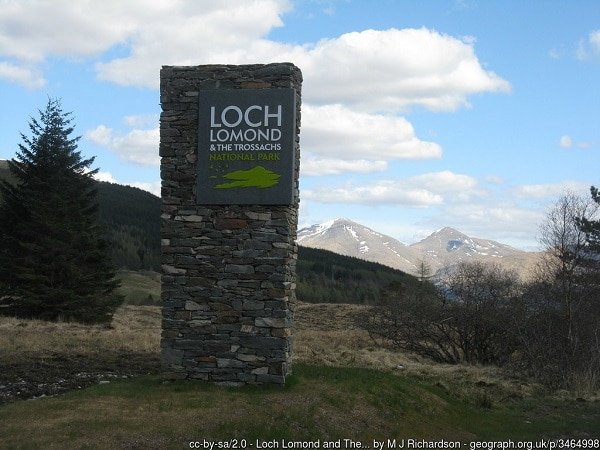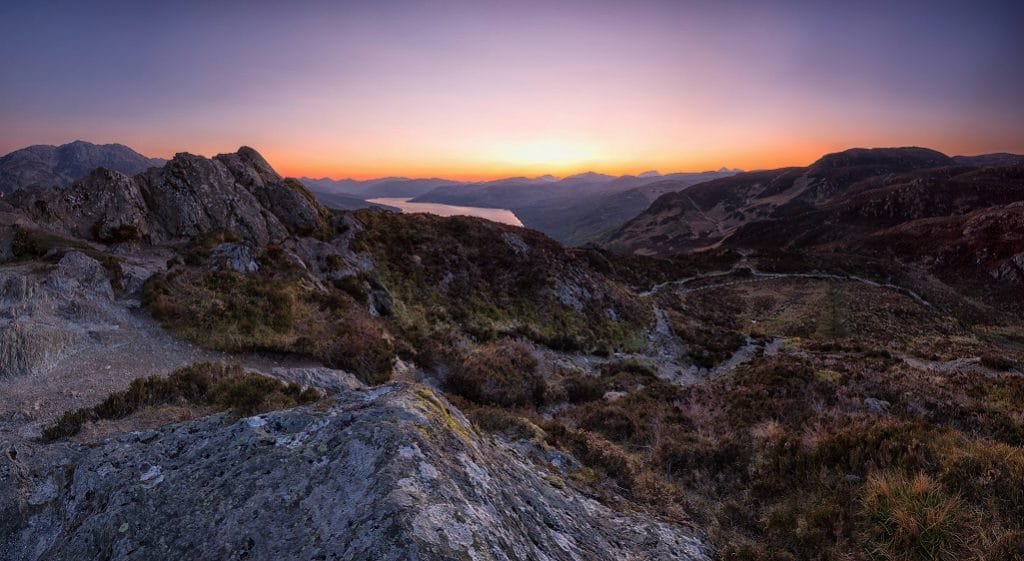
For this installment of our look at the National Parks of Great Britain, we are heading back to Scotland. We are showcasing some of the highlights, uncovering a few of those special places, and sharing tips on when to visit, where to stay, etc. But where are we, you ask? We’ve already been to the Cairngorms, so this week we are at the beautiful Loch Lomond and The Trossachs.

Loch Lomond and the Trossachs National Park, or as it is known in Scottish Gaelic: Pàirc Nàiseanta Loch Laomainn is nan Tròisichean, was established in 2002. It was the first of the Scottish National Parks. It covers an area of 720 square miles, making it the fourth largest park in Britain. More than 15,000 people live within the park, and half of Scotland’s population live within an hour’s drive, so it is a perfect day out for many people. In 2011, 1.75 million visitors went to the park.
There are seven visitor centres in the area, some operated by the National Park and some by Visit Scotland–Aberfoyle, Balloch, Balmaha, Callander, Duke’s Pass, Glen Finglas, and Tyndrum. All are a great place to plan your day, get directions, making hotel bookings, and just learn a little more about the area.

What to do.
The park is composed of four sections, each with its own distinctive features. Loch Lomond is Britain’s largest inland body of water. The Cowal Peninsula in the southwestern part of the park is home to the Argyll Forest Park. Breadalbane in the northeast corner has glens, waterfalls, and history, while the Trossachs contain two magnificent National Scenic Areas, and an abundance of wildlife. It goes without saying that there is plenty to do, whatever area of the park you visit.

Walkers can enjoy one of the many short trails, or the more ambitious can undertake some very challenging hikes and climbs. Within the park, there are 21 Munros (mountains over 3,000 ft in height), and 19 Corbetts (2,500 to 3,000 ft). This is the place in the UK for serious mountain enthusiasts.
For those who prefer to get around on two wheels, there are routes suitable for both road cycling and mountain biking. National Cycle Network Route 7 runs through the park. Either bring your own bike or hire one when you get here.
Loch Lomond and the Trossachs National Park is best known for two things. We’ve briefly looked at the mountains so now it’s time to turn to the water. Altogether within the park, there are 22 large lochs, about 50 rivers, and many more smaller lochs, lochans, and burns. It is a fisherman’s paradise. Be sure to have the proper fishing permits, which are available at area newsagents and tackle shops.

And whenever you go, and whatever your planned activity, don’t pass up a trip out on one of the waterbusses.
What to see.
If you’re in the Breadalbane area of the park, be sure to visit the grave of Rob Roy in Balquhidder. Some argue that it is not in fact his final resting place, but the churchyard is a charmingly peaceful spot and worth a stop. Inchmahome Priory was once a hiding place for a young Mary Queen of Scots, as well as a source of inspiration for romantic novelist Sir Walter Scott. A steamship named in his honour still carries visitors along Loch Katrine.
If you find yourself in the Loch Lomond area in April or September, Springfest and the Loch Lomond Food and Drink Festival showcase a fine selection of local produce and live entertainment.

Avoid the crowds.
Fortunately, given the size of the park, it is easy to avoid crowds, provided you stay away from the obvious tourist areas. Needless to say, Loch Lomond itself it a popular attraction, as is Loch Katrine. However, there are plenty of other lochs where you can sit and picnic in solitude. Even at Lomond and Katrine, you can escape the masses by visiting the parts of the shore at the opposite ends from the boat docks, tea rooms, etc.
Where to stay.
Camp sites are available throughout Loch Lomond and the Trossachs National Park. Wild camping is also permitted, and is a great way to truly experience the Scottish landscape. If you do choose the wild camping option, be respectful of people’s property and livestock, and be sure to observe any local regulations.
Whatever your accommodation preference–hotel, bed and breakfast, or self-catering–you will find a huge range of options to suit a variety of budgets. Our sidebar includes several affiliate links to hotel chains and cottages within the area.



4 thoughts on “National Park Spotlight: Loch Lomond and the Trossachs”
Comments are closed.